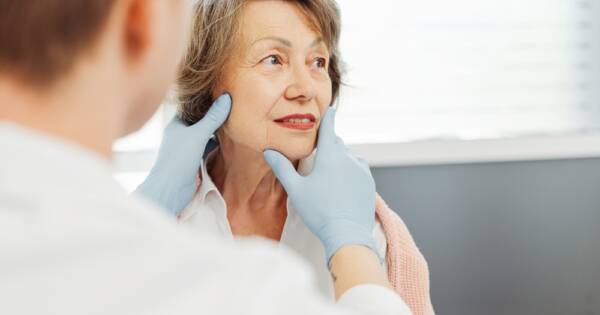Painful lumps, skin irritation, or recurring abscesses? These could be early signs of Hidradenitis Suppurativa (HS), a chronic skin condition that may worsen over time. Left untreated, it can lead to severe inflammation, scarring, and infections. Recognizing the symptoms early is key to managing this condition effectively and preventing long-term complications. Discover what you need to know about HS, the early signs, and why early intervention is crucial.
What is Hidradenitis Suppurativa?
Hidradenitis Suppurativa is a chronic, inflammatory skin condition that affects the hair follicles and sweat glands, typically in areas where skin rubs together, such as the underarms, groin, buttocks, and beneath the breasts. HS is characterized by the formation of painful lumps, abscesses, and tunnels beneath the skin. These lumps can rupture, leading to drainage and foul-smelling discharge. Over time, repeated flare-ups can result in significant scarring and the development of sinus tracts, which are abnormal channels or tunnels under the skin.
The condition is often misunderstood and misdiagnosed, and many people experience long delays in seeking medical attention or finding a proper diagnosis. However, recognizing the early signs of HS and seeking timely treatment can significantly reduce its impact on a person’s quality of life.
Early Signs of Hidradenitis Suppurativa
Recognizing the symptoms early can help prevent the progression of Hidradenitis Suppurativa and manage flare-ups effectively. Here are the most common early signs you shouldn’t ignore:
- Painful Lumps or Nodules: One of the first signs of HS is the development of tender, painful lumps or nodules under the skin. These lumps may feel firm and can vary in size. They often appear in areas prone to friction, such as the underarms, groin, and buttocks. These lumps are typically swollen and may be accompanied by discomfort or pain.
- Recurring Abscesses or Pimples: In many cases, the lumps evolve into abscesses or boils filled with pus. These abscesses can rupture and drain fluid, leading to irritation and foul-smelling discharge. They often recur in the same spots and can become increasingly painful and difficult to manage.
- Skin Irritation and Redness: If you notice that your skin is becoming irritated, inflamed, or red in specific areas, this could be an early warning sign of HS. The inflammation is typically localized to the areas where the lumps or abscesses are developing. The affected skin may appear shiny, warm to the touch, or inflamed.
- Formation of Tunnels (Sinus Tracts): Over time, untreated lumps and abscesses may form sinus tracts, which are small, abnormal channels that develop under the skin. These tracts can become interconnected, causing scarring and further tissue damage. The formation of tunnels beneath the skin is a key sign that the condition is advancing and requires medical attention.
- Scarring and Skin Changes: As HS progresses, you may notice the development of thickened, scarred tissue in areas where abscesses and lumps have been frequent. These scars may be keloid-like (raised) or fibrous, leading to permanent changes in the skin’s appearance. Chronic flare-ups of HS can cause disfiguring scars, which may be emotionally distressing.
- Flare-Ups Triggered by Friction or Heat: Many individuals with HS notice that their flare-ups are triggered by friction, sweating, or heat. Wearing tight clothing, sitting for long periods, or engaging in activities that increase sweating can exacerbate the condition. Identifying and avoiding triggers can help reduce the frequency and severity of flare-ups.
Why Early Intervention is Key
Although there is no cure for Hidradenitis Suppurativa, early intervention can help manage symptoms, reduce flare-ups, and improve quality of life. If you notice any of the early signs of HS, it’s important to seek medical advice from a dermatologist or healthcare provider. Early diagnosis and treatment can prevent the condition from worsening and reduce the likelihood of scarring and infection.
Treatment options may include:
- Topical Treatments: Prescription creams or ointments to reduce inflammation and prevent infection.
- Oral Medications: Antibiotics or other medications to control inflammation and manage pain.
- Biologics: These are targeted therapies that help control the immune system’s response, reducing inflammation.
- Surgical Interventions: In some cases, draining abscesses or removing sinus tracts may be necessary.
- Lifestyle changes, such as maintaining a healthy weight, managing stress, and avoiding friction or sweating, can also help minimize flare-ups.
Early Detection and Treatment Are Key to Managing Hidradenitis Suppurativa
Hidradenitis Suppurativa is a silent but destructive condition that can cause significant pain, discomfort, and long-term skin damage if left untreated. Recognizing the early signs, such as painful lumps, recurring abscesses, and skin irritation, is essential for preventing the progression of the disease. Early medical intervention and lifestyle adjustments can help manage symptoms, reduce flare-ups, and improve the overall quality of life. If you notice any of these early signs, don’t hesitate to seek medical attention—early treatment is the key to managing HS and minimizing its impact.





